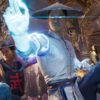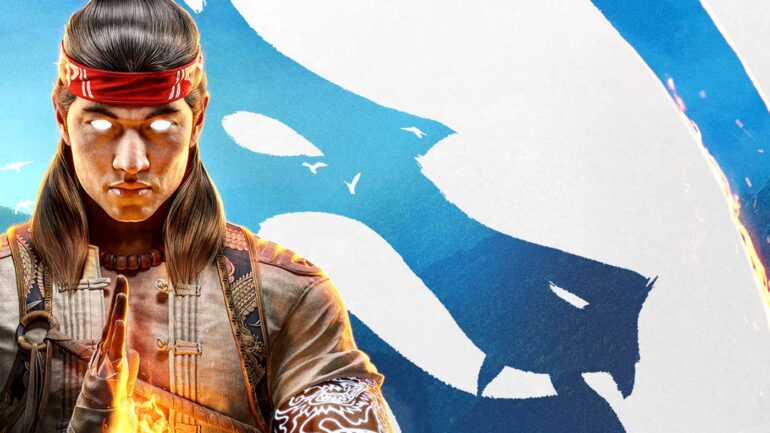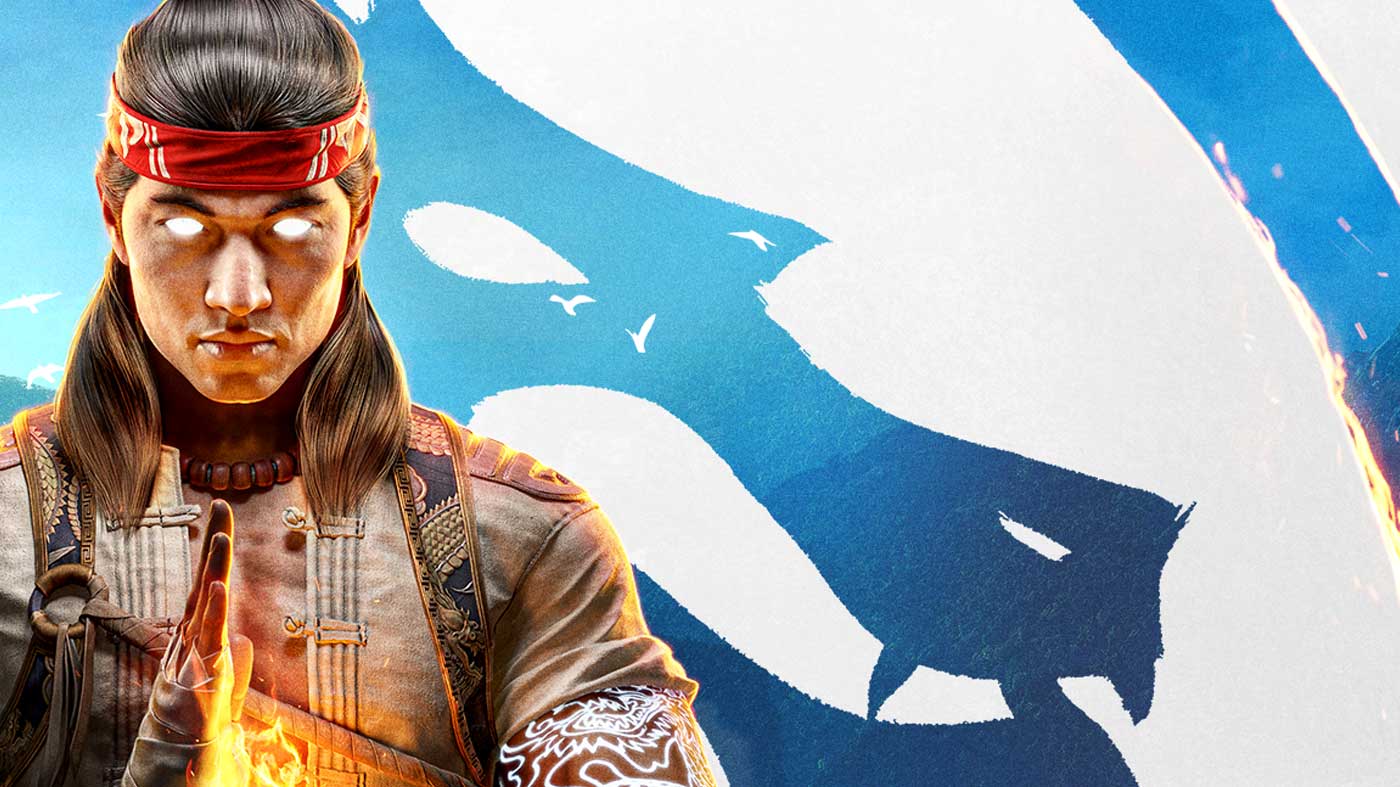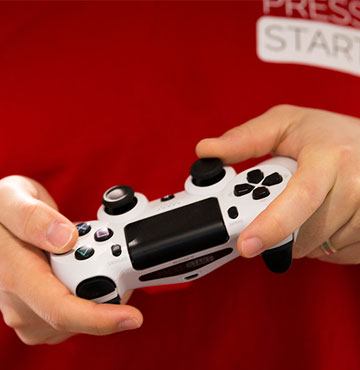Few franchises can enjoy a thirty-year tenure like Mortal Kombat can. But it’s just a testament to how much the series is willing to reinvent itself, for better or worse. Mortal Kombat has been subject to many successes and failures throughout those three decades. The franchise even survived the bankruptcy of its original publisher. Now, Mortal Kombat 1 is reinventing everything yet again. In light of those successes and failures, it’s obvious that Mortal Kombat 1 is the former and another win for Netherrealm. Quite frankly, I’ve not played a fighting game like it.
The series has dabbled in rebooting and the mixing of timelines already, but none has been as dramatic as with Mortal Kombat 1. Following the events of the last game, Liu Kang is given the power of an elder god and can reset the timeline to a new era. He does this but obviously can’t control what happens in the new timeline, so naturally, there’s a new threat to battle once more. It’s a hammy but a much-needed refresh after the convoluted Mortal Kombat 11.
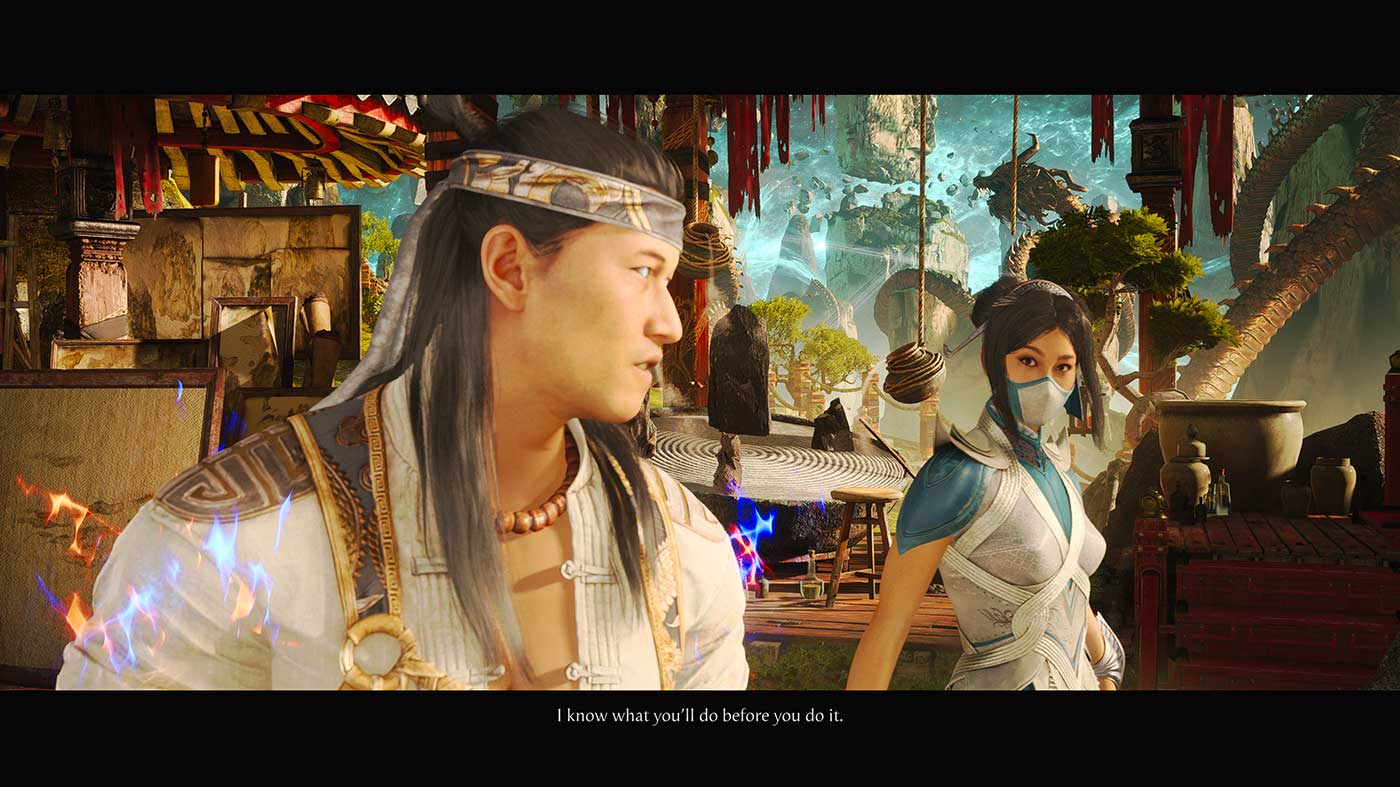
Being the start of a new era, everything has changed. Some characters play a more significant role in the story. Others might still be as treacherous as in previous games but for different, more noble reasons. It’s a cool shakeup, but I’d argue that where things end up, it’s not quite the dramatic reinvention we’d have thought. But, regardless, Mortal Kombat 1 does feel like a perfect point for a newcomer to jump in while still winking at those who know the already-established lore. Even better, despite being such unadulterated schlock, the production value holding it all up helps bring the engaging story to life.
But this is still a fighting game. You choose your character and arena before attacking each other with special moves and combos. The core concept is mainly unchanged, and combat flows much faster than Mortal Kombat 11 but still slower than Mortal Kombat X. The combo system has also been reworked, allowing you to take your kombos to the air. But no other change is as significant as the Kameo system, which is baked into the design of Mortal Kombat 1.
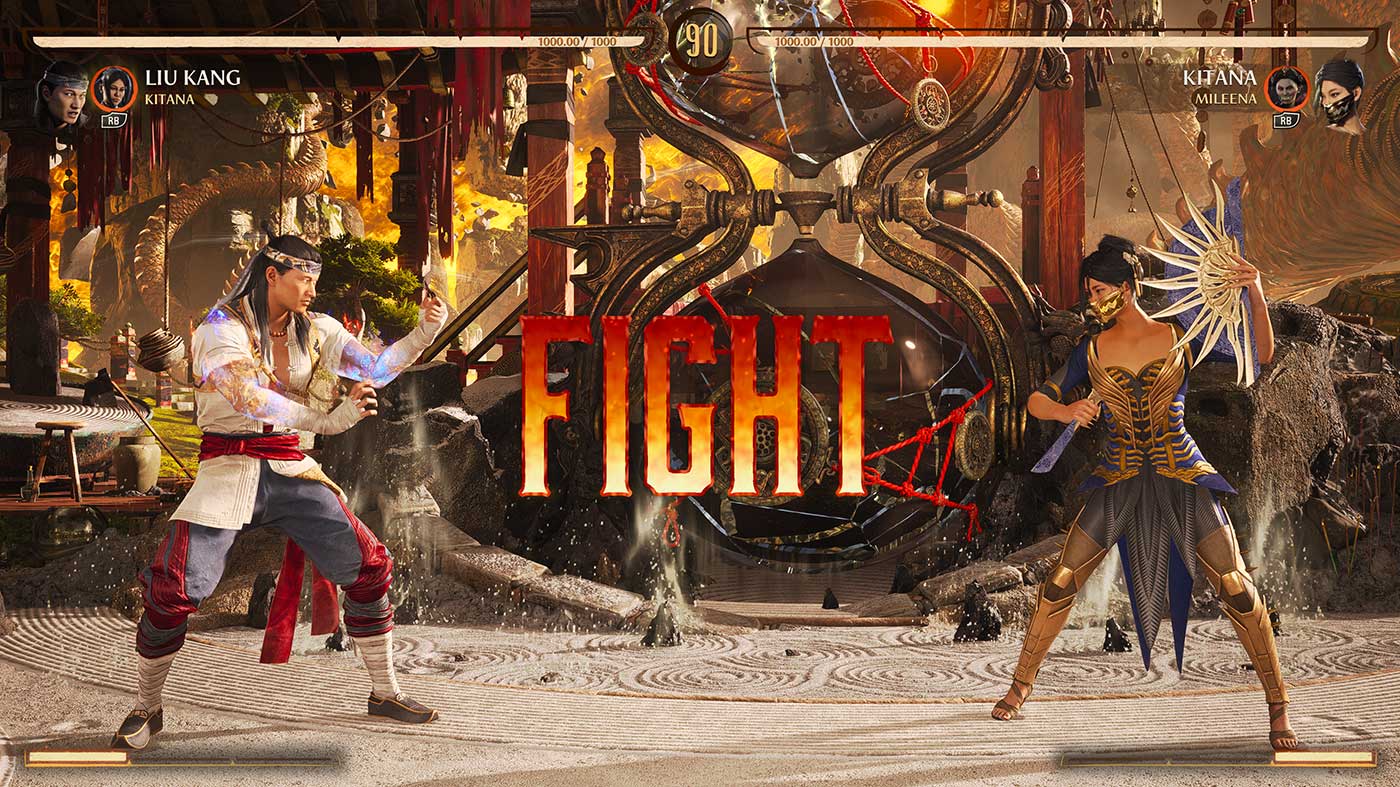
The Kameo system represents the biggest shakeup to the Mortal Kombat formula. After choosing your main character, you’ll also select a character to call upon to assist you. This is your Kameo character, and while you never control them directly, you can call them in with a button press. Each Kameo has multiple moves, and depending on how you hold the button or what direction you press it will influence which attack they’ll do. They’re tied to their separate meter underneath the health bar, so they’re not easily abusable. But they’re a different roster that pulls from every dark corner of Mortal Kombat’s three decades of history.
The Kameo system is particularly clever because it can compensate for any shortcomings your favourite character might have. Characters with fewer options, when their opponent is up close, could pick a Kameo with abilities that keep your opponent away, for example. Many of them can also be called in mid-combo, depending on the move, and allow you to extend your combo where you usually couldn’t. It’s a great addition that encourages player expression and flexibility built into a game where the roster is already very well-varied.
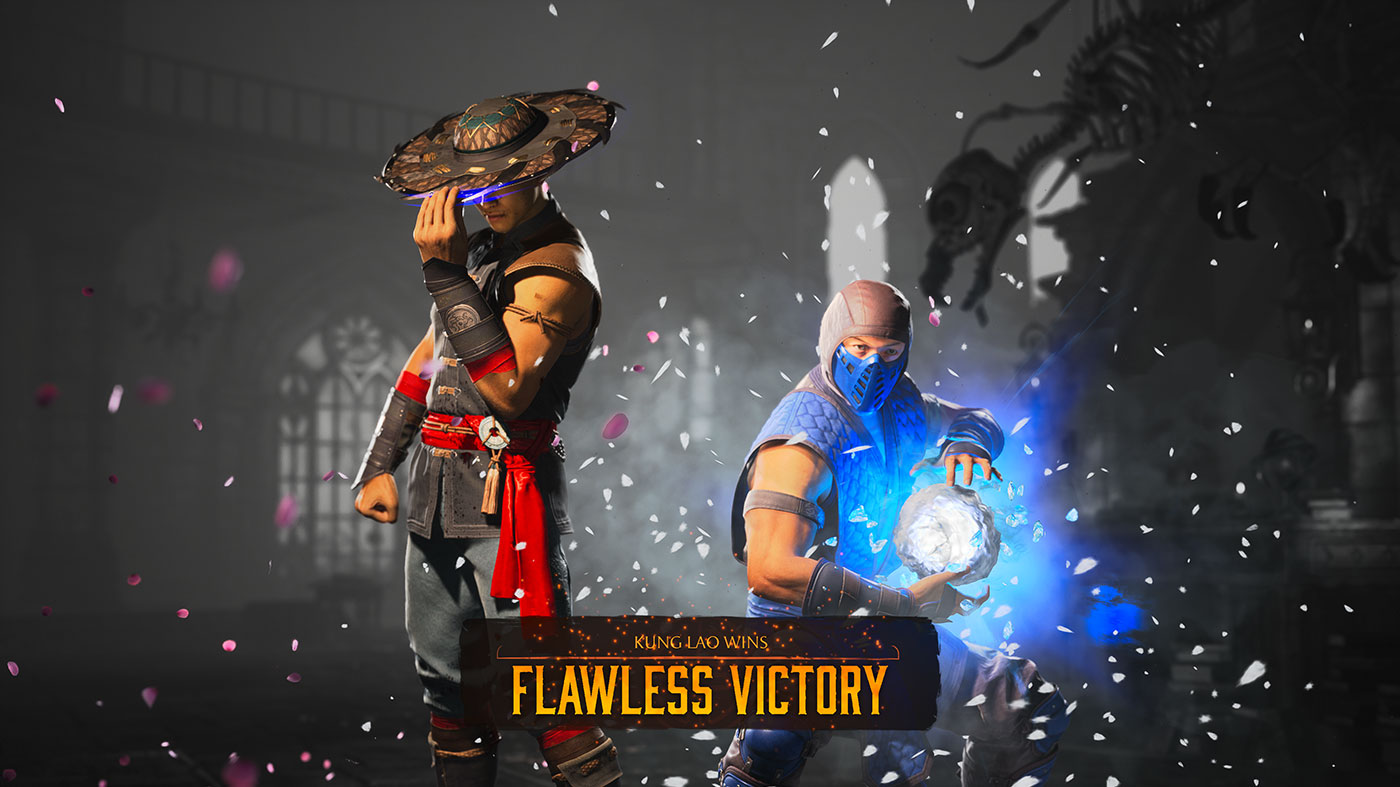
And as far as the roster goes, this is easily one of the series’ best. Where previous games focused on a mix of newcomers and mainly fighters from the first three games, Mortal Kombat 1 does things differently. Characters from over two decades ago return in a new light, and it’s especially a joy to see the entire series’ history represented here. There’s a good mix of characters from each of the distinct eras of the franchise, and while one or two fan favourites are missing, I’d argue that over ninety percent of everyone’s favourites are here.
While the roster has zero newcomers, there is a case to be made for just how many of these returning characters are genuine reinventions. So many are returning for so long, some even from games operating in entirely 3D space, that they’ve been reworked to play like new characters. Even series stalwarts like Scorpion, Johnny Cage and Kitana play dramatically differently from what came before, with new additions to their kits to change their flow. So, while there are no new characters, the context in which they appear more than makes up for it.
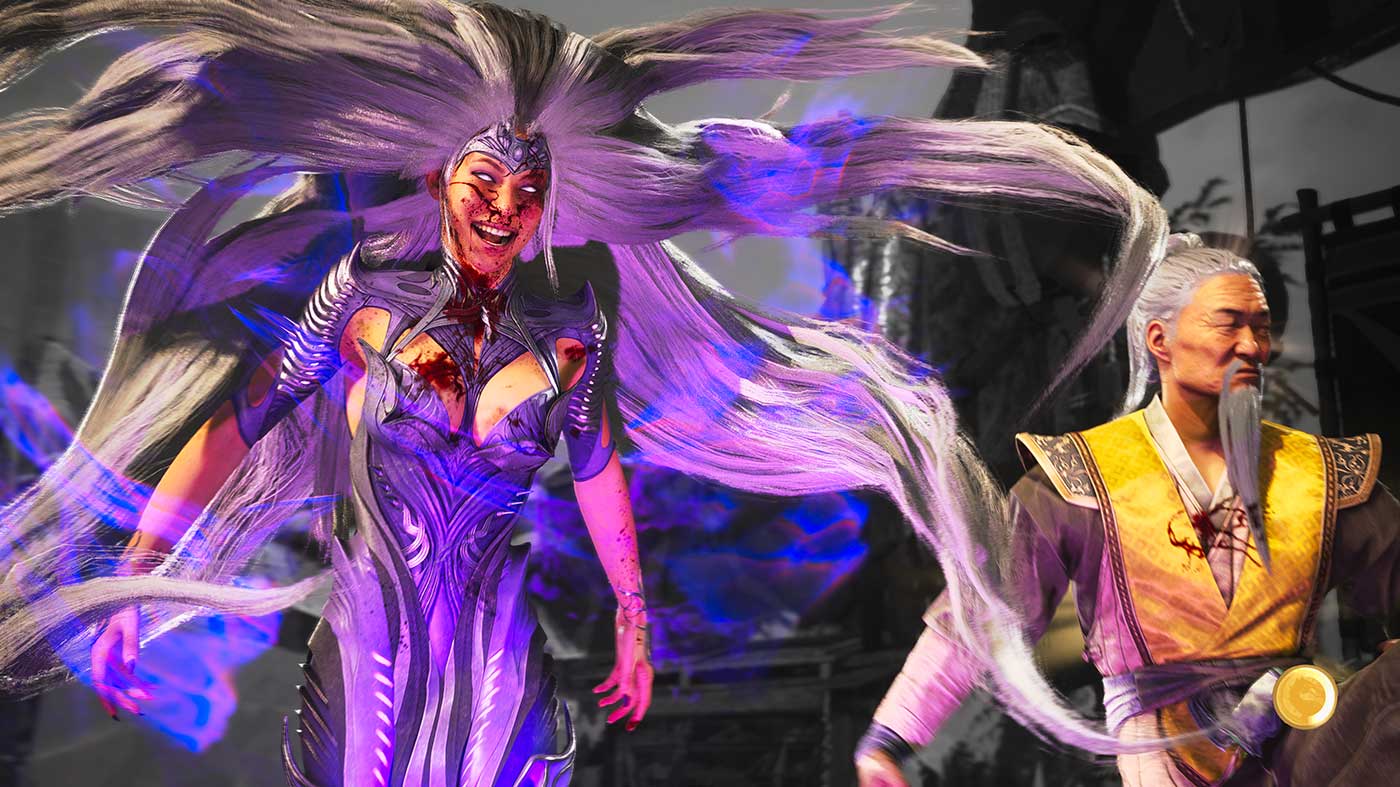
With the advent of the Kameo system, the variations system in the last two games is now gone. While I enjoyed having three different versions of each character, it would almost always be unbalanced. Some variations were better than others, and others would never get used. The removal of variations in Mortal Kombat 1 is welcomed – it means the team has to focus on a single set of moves for each character, and, honestly, the roster is stronger for it. Everyone is a joy to play.
THE CHEAPEST COPY: PREMIUM EDITION FOR $144 AT AMAZON OR STANDARD EDITION STARTING AT $79
The game is still violent, though Mortal Kombat 1 often errs more on goofy than bleak or realistic. Fatalities and fatal blows are also tuned to be much quicker, getting you back into your game faster. I appreciate this change, though I think people wanting more complicated fatalities will be disappointed. It’s so ridiculous and over the top that it’s almost comical, perhaps indicative of why Mortal Kombat has such broad appeal despite being an outwardly violent game.
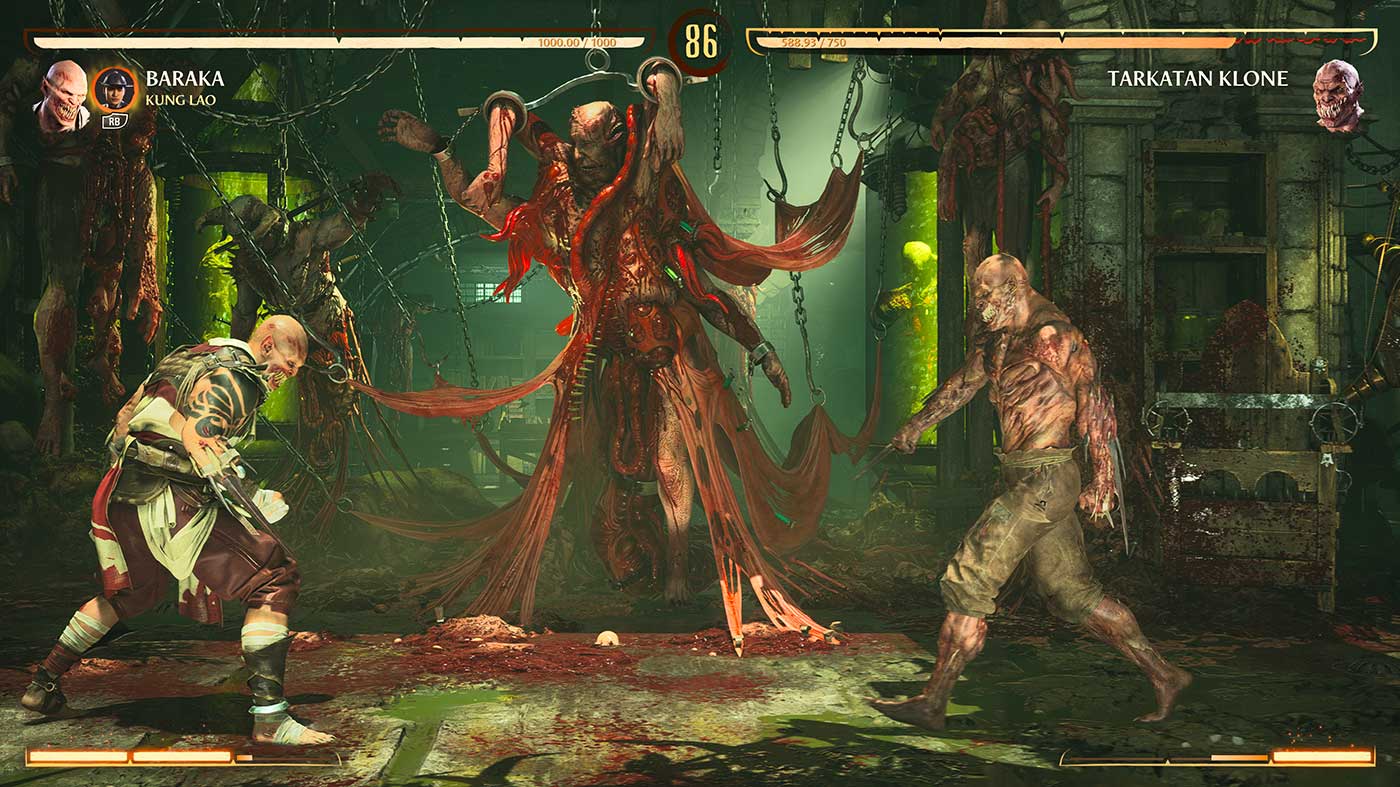
Besides the genre-best story mode, a new mode called Invasions is also included here. It’s essentially a tabletop RPG, assigning elemental affinities and stats to manage for your characters as they progress through board games of locations from the story. It’s an intelligent culmination of everything Netherrealm has done previously to appeal to solo players – the living towers are still here refreshing hourly, daily, weekly and monthly – and really is the new version of the Krypt. As such, you’ll do a lot of unlocking of skins and weapons here, with each node of the board allowing you to fight enemies with all kinds of modifiers or effects. You’ll even find items that will open up paths in previous boards, too, kind of like Metroid.
My initial reaction to Invasions is that it’s a pretty massive undertaking. There are at least six boards to explore, comprising hundreds of fights. Some nodes will have you taking on multiple enemies simultaneously; others have mini-towers to conquer. Some even have you just avoiding projectiles without fighting anybody. There’s a nice mix of activities on offer here, and it’s something I can see growing into something even better than what it already is as time goes by. I hope there’s a way in the future to speed up your character’s movement speed on the board, but it’s a minor nitpick, admittedly.
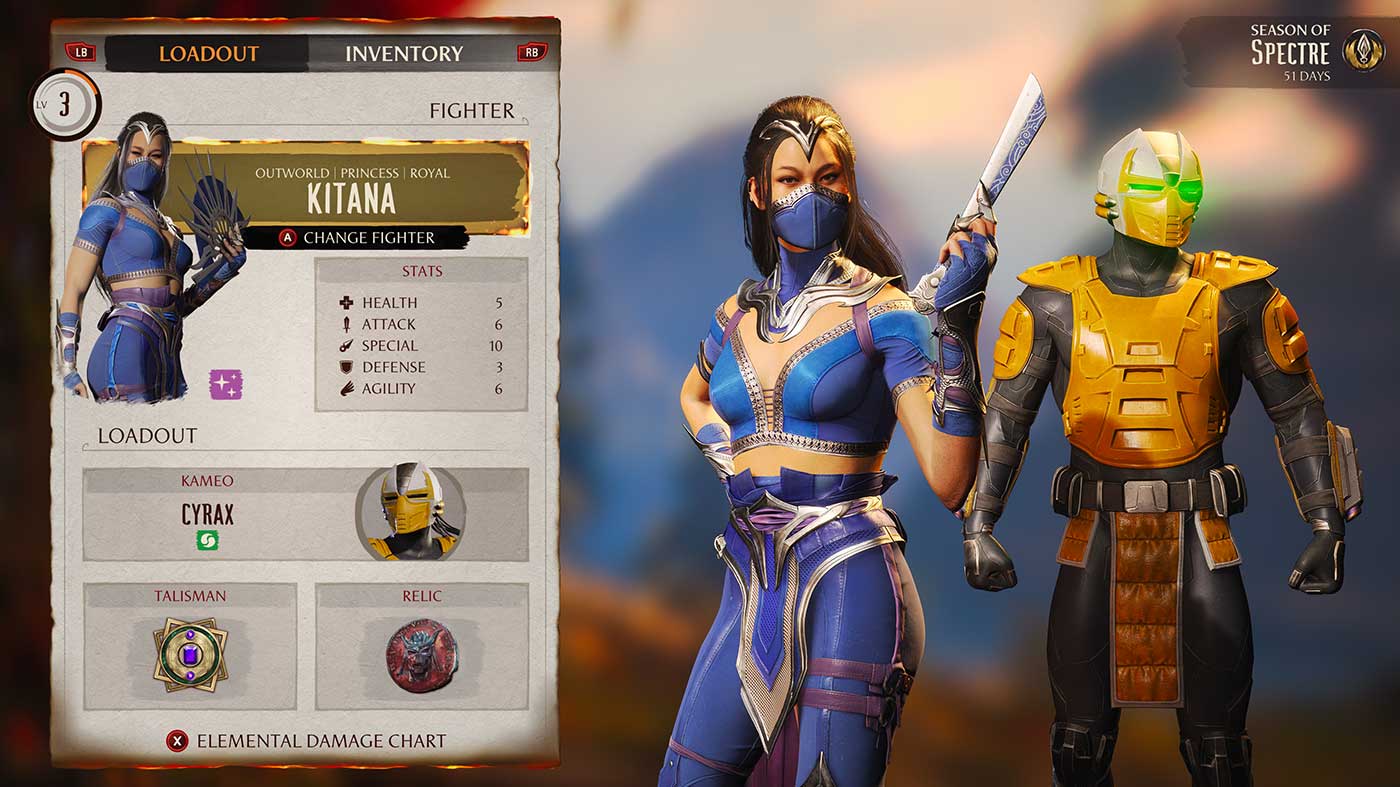
The idea is that each season will bring new boards with new storylines to explore and uncover. I love the idea; though the story is admittedly pretty minimalist, it’s cool to explore some “what-if” scenarios in the world of Mortal Kombat. The first season is already available and concerns the man who was the original Scorpion. If every season is as big as this one, there will be a lot of great solo content for players to get through in Mortal Kombat 1. Time will tell, but Netherrealm has proven before that they’re up to the challenge, so we can only hope that will continue here.
One issue with Mortal Kombat 1 is that it’s yet another fighting game with locked characters. While I recognise it harkens back to when these games first found popularity, it’d be a bit of a bummer to boot the game on a Saturday night with friends and see you can’t play as everyone. One character is tied to finishing the story. At the same time, five of the game’s fifteen Kameos can’t be used until you reach a certain level on your profile. It’s not as egregious as Super Smash Bros. Ultimate, mind you, but it is frustrating if you want to jump in and play with a group with everyone available.
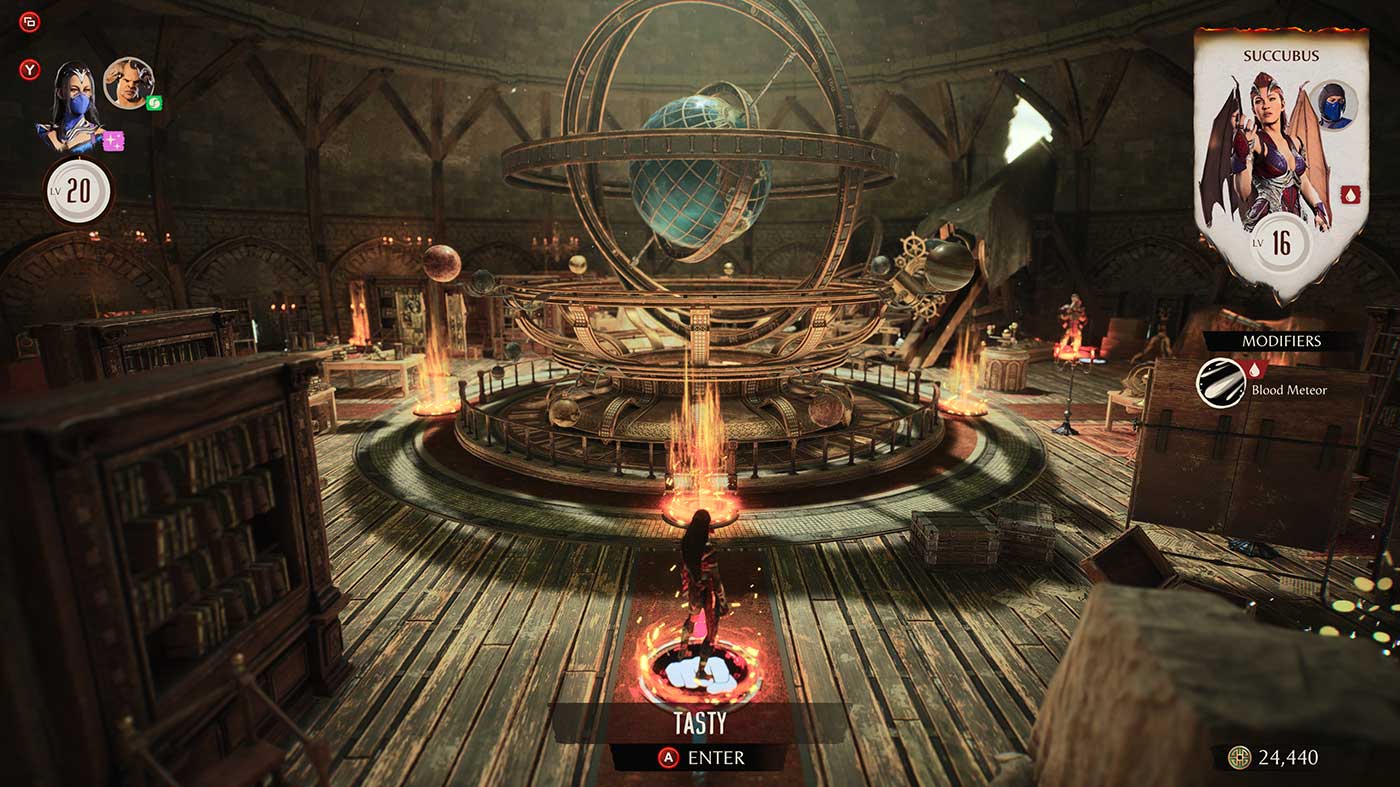
Customisation was a big part of Mortal Kombat 11, but Mortal Kombat 1’s approach is bound to divide. The system has been simplified so that every character has one aspect of their design that can be customised. Examples of this are Scorpion’s Mask, Li Mei’s Gauntlets and Kitana’s Fans. There are still several skins to unlock, each with numerous palettes to change their colour, but the inability to change so much about each character is bound to divide. Once again, I never engaged with the customisation much in Mortal Kombat 11 beyond finding the skins I liked, but those who want to change the most particular aspect of their favourite characters design might be disappointed. And while it’s simplified, the skins on offer here are all good, which makes up for it.
More surprisingly, at the time of writing, the monetisation mechanics aren’t anywhere near as rapacious as you might expect. There are still three currencies, however. Plain coins are earned by playing mainly offline modes. Season coins are made through Invasions Mode and can be used to buy seasonal content. In three hours of play, I’d earn enough to buy five to seven skins I wanted, though you can still earn them in Invasion, too. Finally, there are Dragon Crystals. These are the “real money” currency in the game and can be used in a premium store that refreshes regularly.
While there are in-game purchases here, Mortal Kombat 1 gives out more than enough playing naturally without incessant grinding that I’d expected. It’s a refreshing change that is in stark opposition to how I felt about Mortal Kombat 11, which forced you to grind regularly against battles that were tuned to be way too difficult.
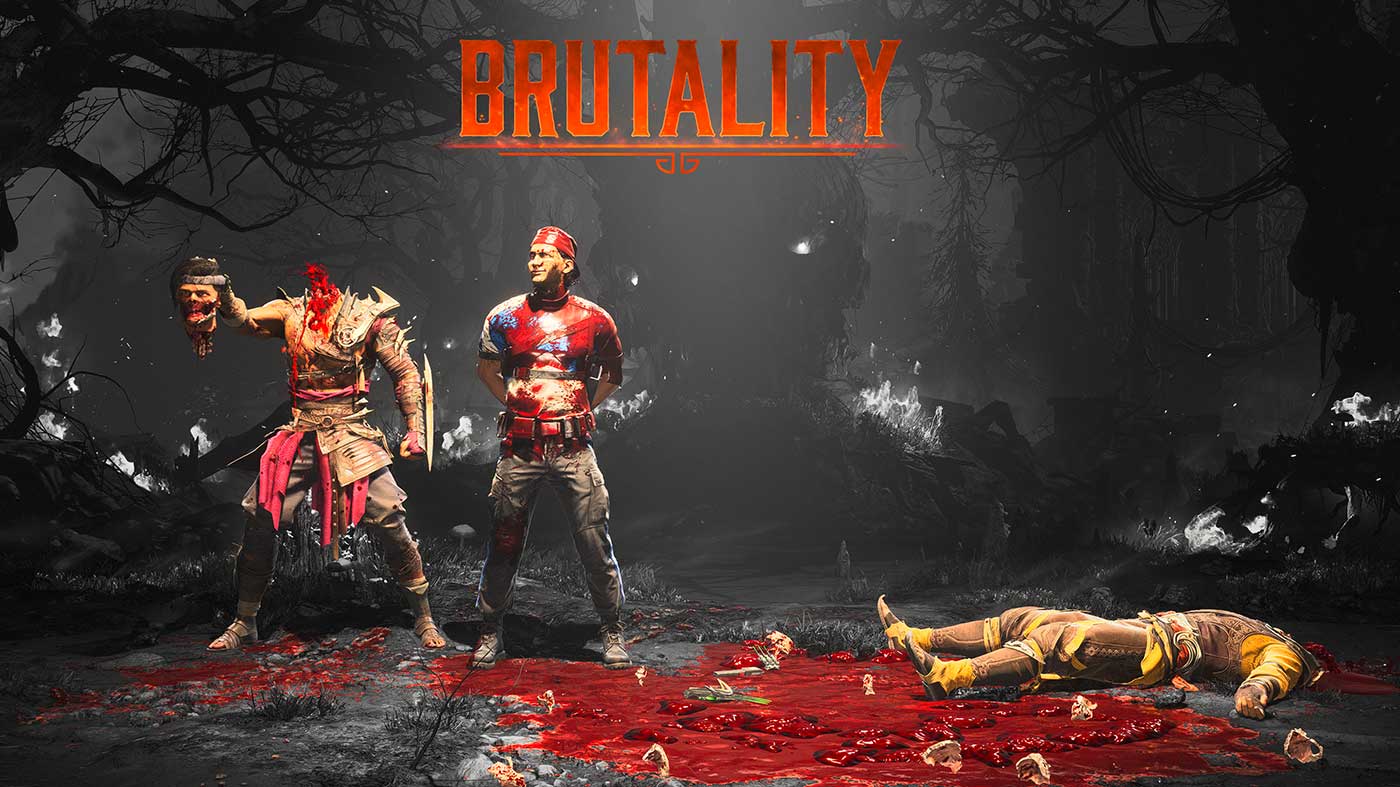
The online modes remain unchanged from Mortal Kombat 11. Public and private rooms can be setup, and there’s still a king of the hill option to emulate that classic arcade experience. Kombat League is also here from the get-go, serving as a ranked mode that rewards gear set around the league theme every few months. Of course, while the net code is strong as ever, it’s a huge disappointment to see that cross-play isn’t here, at least at launch. Especially since it was in Mortal Kombat 11 and worked so well. We have confirmation that it’s coming in the future, but given it’s such the standard now, it’s an odd omission for a game of this calibre.
From a presentation standpoint, Mortal Kombat 1 is the first time the team has moved to a new engine, and it shows. The game has never looked better. Even more encouraging, the levels are all beautifully rendered and wildly colourful. Ever since Injustice 2, it’s been obvious that Netherrealm’s facial animations were something else, and this is especially obvious in Mortal Kombat 1, especially during its lengthy story mode cutscenes. It’s the best-looking fighter available to players so far and it looks so incredibly fluid in motion.
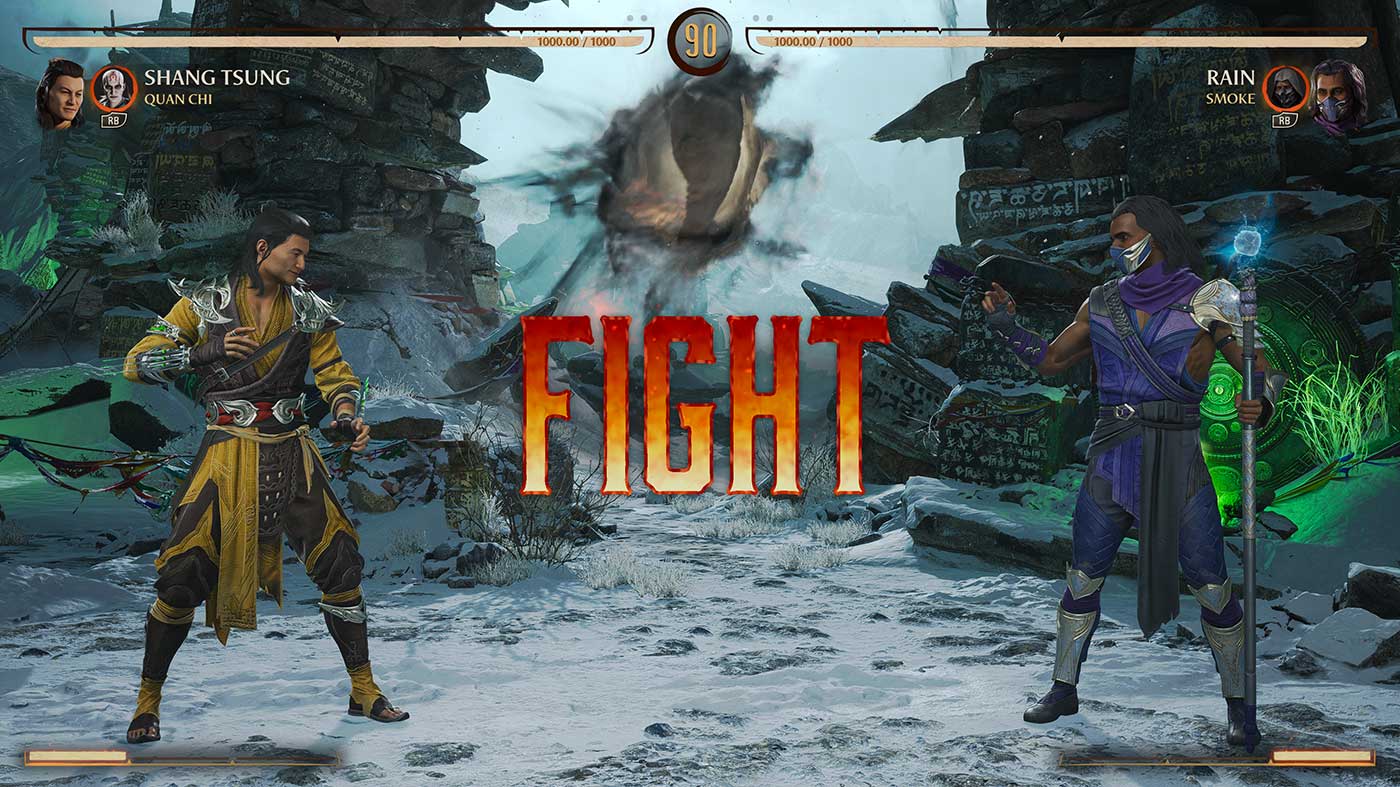
Even more encouraging, the game’s music has been dramatically improved, too. Where music often faded to the background in the previous two games, the new music harkens back to the old eras while still feeling fresh and exciting. Voice work is pretty good. Sure, there is yet another celebrity casting choice that’s clearly out of place, but besides them, everyone else turns in some great performances to bring this epic story to life.

